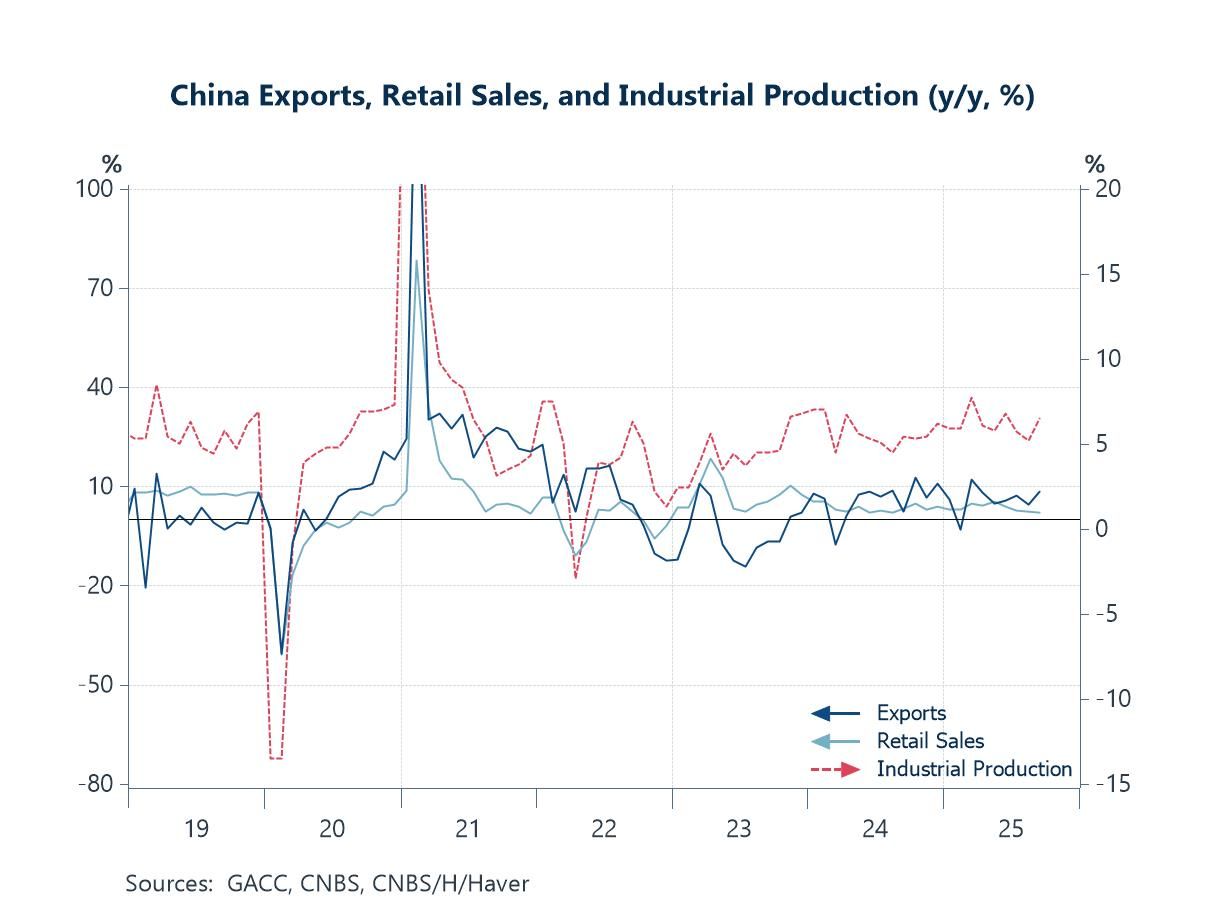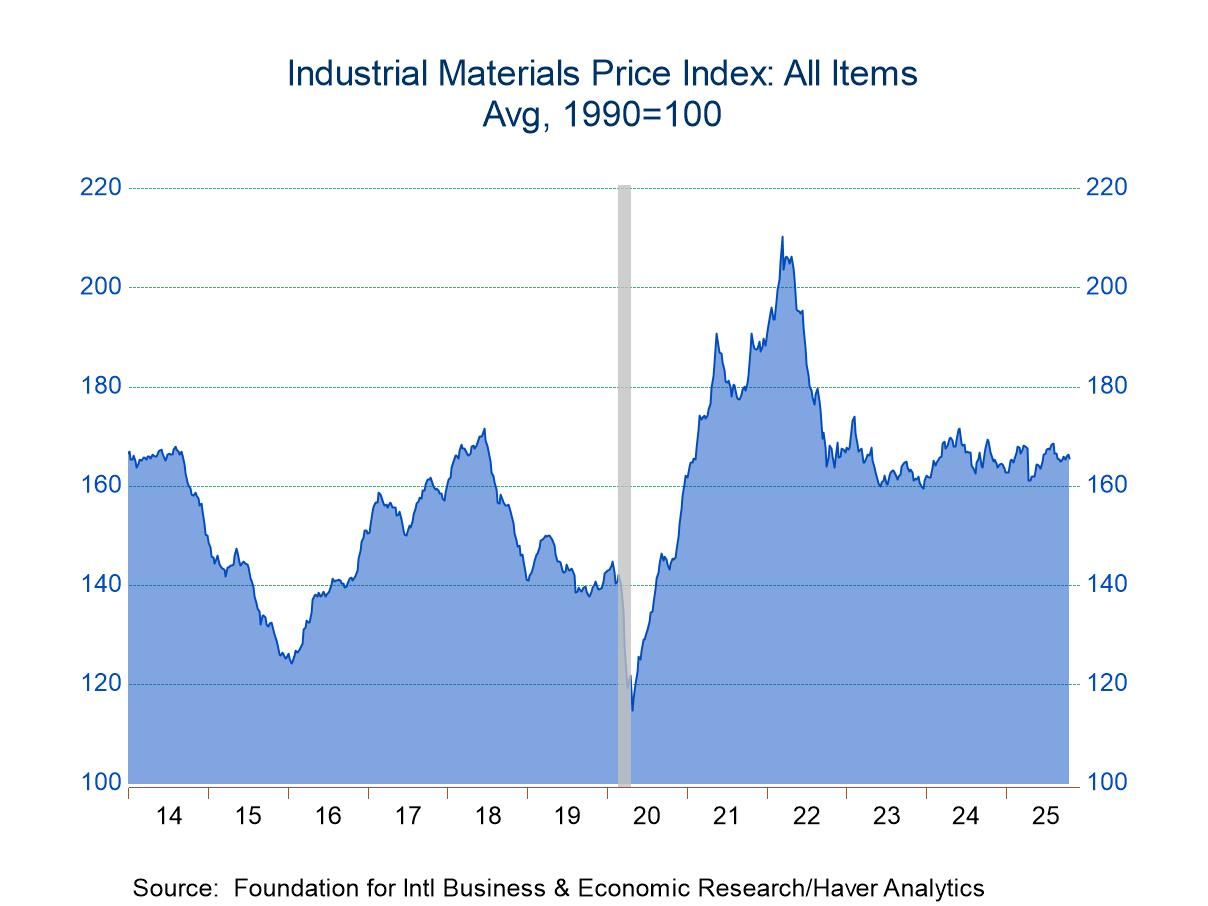 Global| May 06 2015
Global| May 06 2015U.S. ADP: Job Growth Is Disappointing
by:Tom Moeller
|in:Economy in Brief
Summary
The ADP/Moody's National Employment Report indicated that nonfarm private sector payrolls increased 169,000 during April following a 175,000 March gain, revised from 189,000. The latest rise was the weakest since January of last year [...]
The ADP/Moody's National Employment Report indicated that nonfarm private sector payrolls increased 169,000 during April following a 175,000 March gain, revised from 189,000. The latest rise was the weakest since January of last year and down from 296,000 last June. It disappointed consensus expectations for a 198,000 increase in the Action Economics Forecast Survey.
The ADP survey is based on ADP's business payroll transaction system covering 411,000 companies and nearly 24 million employees. The data are processed by Moody's Analytics Inc., then calibrated and aligned with the BLS establishment survey data.
Small-sized payrolls improved 94,000 (2.7% y/y), the weakest rise in three
months. Medium-sized payrolls rose a moderate 70,000
(2.4% y/y) in April compared to a 123,000 gain six months earlier. Large
payrolls nudged 5,000 higher (1.8% y/y), down from an 81,000 increase back in
September.
Employment in the goods producing sector slipped 1,000 (+2.2% y/y), compared
to a 64,000 rise in September. Hiring in the construction sector advanced 23,000
(5.1% y/y) while manufacturing sector businesses shed 10,000 workers (+1.1%
y/y). Jobs in the service sector increased a modest 170,000 (2.4% y/y), down
from the 248,000 pace reached last June. Jobs in trade, transportation &
utilities increased 44,000 (1.9% y/y). Professional & business employment
gained 35,000 (3.0% y/y) while employment in the financial sector improved 8,000
(1.7% y/y). The ADP National Employment Report data are maintained in Haver's USECON
database; historical figures date back to April 2001. The figures in this report
cover jobs only in the private sector. The expectation figure is available in
Haver's AS1REPNA database.
ADP/Moody's National
Employment Report
Apr
Mar
Feb
Y/Y
2014
2013
2012
Nonfarm Private Payroll Employment (m/m
chg, 000s)
169
175
200
2.4%
2.3%
1.9%
2.3%
Small Payroll (1-49)
94
105
102
2.7
2.1
1.9
2.5
Medium Payroll (50-499)
70
64
52
2.4
2.8
2.2
2.1
Large Payroll (>500)
5
6
47
1.8
1.8
1.6
2.1
Goods-Producing
-1
3
17
2.2
2.3
1.7
2.2
Construction
23
21
25
5.1
4.6
3.5
2.5
Manufacturing
-10
-3
3
1.1
1.2
0.9
1.6
Service-Producing
170
172
182
2.4
2.3
2.0
2.3
U.S. Worker Productivity Declines Again
by Tom Moeller May 6, 2015
Nonfarm productivity fell at a 1.9% annual rate last quarter (+0.6% y/y), about the same as during a little-revised Q4. Harsh winter weather and the strike at West coast ports constrained real output. It slipped at a 0.2% rate (+3.5% y/y) while hours worked gained 1.7% (2.9% y/y). Compensation per hour increased a 3.1% rate (1.7% y/y), the strongest rise in a year. When adjusted for lower prices it improved at a 6.2% rate (1.3% y/y), the strongest gain since Q4 2012. The decline in productivity caused unit labor costs to rise at a 5.0% rate (1.1% y/y), the firmest increase in a year. A 1.7% decline in productivity was expected in the Action Economics Forecast Survey. Unit labor costs were expected to rise at a 4.1% rate.
Manufacturing sector worker productivity declined at a 1.1% rate (+1.4% y/y), revised from +1.3%, after a 3.5% rise. For all of last year, productivity grew 2.2% after a 1.9% increase in 2013. Output grew 4.3% last quarter (4.5% y/y) after a 4.9% gain, while hours worked improved 4.4% (2.0% y/y) following a 1.4% Q3 increase. Worker compensation per hour increased at a 1.4% rate (2.4% y/y). Adjusted for price inflation, compensation gained 2.7% (1.2% y/y). Unit labor costs increased an upwardly-revised 1.5% (0.0% y/y) following two quarters of sharp decline.
The productivity & cost figures are available in Haver's USECON database. The expectations figure is from Action Economics and is the AS1REPNA database.
| Productivity & Costs (SAAR,%) | Q1'15 | Q4'14 | Q3'14 | Q1 Y/Y | 2014 | 2013 | 2012 |
|---|---|---|---|---|---|---|---|
| Nonfarm Business Sector | |||||||
| Output per Hour (Productivity) | -1.9 | -2.1 | 3.9 | 0.6 | 0.7 | 0.9 | 1.0 |
| Compensation per Hour | 3.1 | 1.9 | 2.8 | 1.7 | 2.5 | 1.1 | 2.7 |
| Unit Labor Costs | 5.0 | 4.2 | -1.0 | 1.1 | 1.8 | 0.3 | 1.7 |
| Manufacturing Sector | |||||||
| Output per Hour (Productivity) | -1.1 | -0.1 | 3.5 | 1.4 | 2.2 | 1.9 | 1.0 |
| Compensation per Hour | 1.5 | 1.4 | 2.1 | 0.8 | 2.3 | 0.5 | 1.8 |
| Unit Labor Costs | 2.7 | 1.5 | -1.3 | -0.7 | 0.1 | -1.4 | 0.8 |
Tom Moeller
AuthorMore in Author Profile »Prior to joining Haver Analytics in 2000, Mr. Moeller worked as the Economist at Chancellor Capital Management from 1985 to 1999. There, he developed comprehensive economic forecasts and interpreted economic data for equity and fixed income portfolio managers. Also at Chancellor, Mr. Moeller worked as an equity analyst and was responsible for researching and rating companies in the economically sensitive automobile and housing industries for investment in Chancellor’s equity portfolio. Prior to joining Chancellor, Mr. Moeller was an Economist at Citibank from 1979 to 1984. He also analyzed pricing behavior in the metals industry for the Council on Wage and Price Stability in Washington, D.C. In 1999, Mr. Moeller received the award for most accurate forecast from the Forecasters' Club of New York. From 1990 to 1992 he was President of the New York Association for Business Economists. Mr. Moeller earned an M.B.A. in Finance from Fordham University, where he graduated in 1987. He holds a Bachelor of Arts in Economics from George Washington University.






